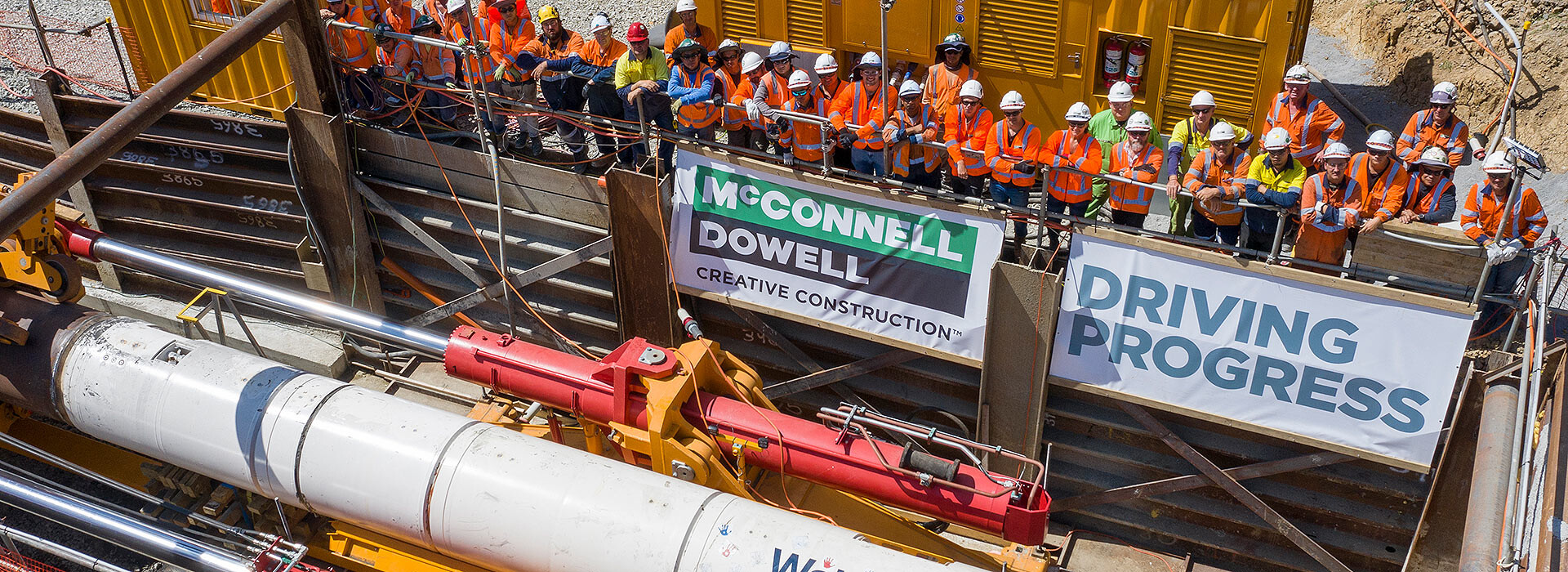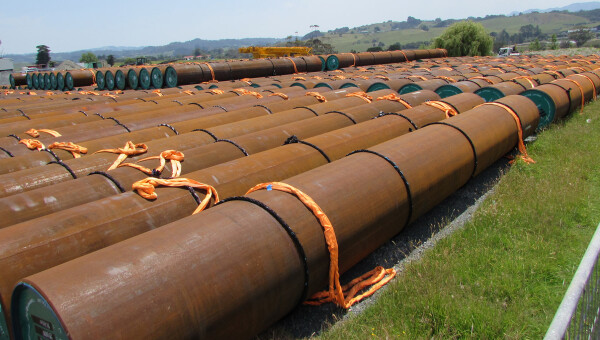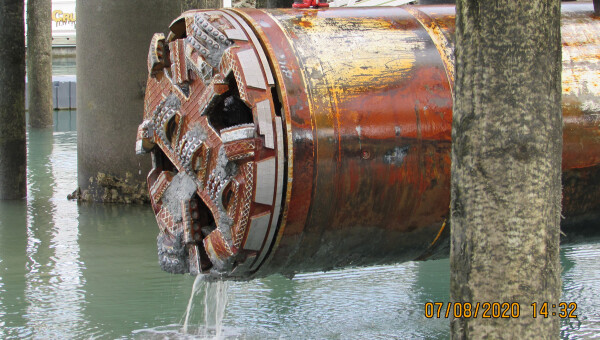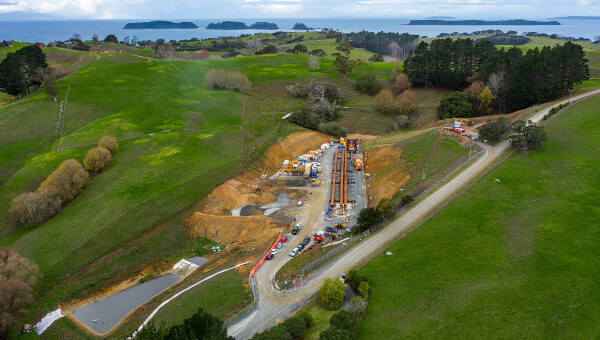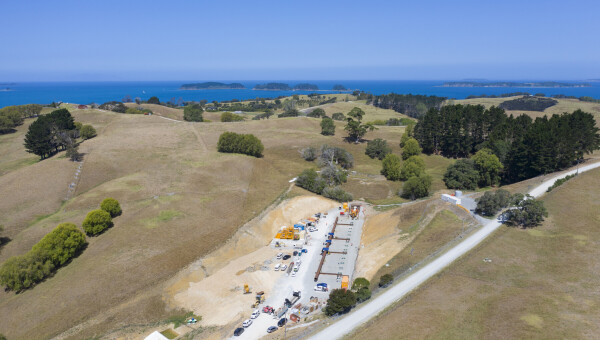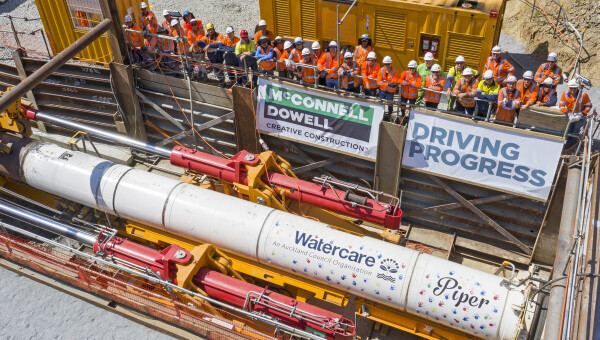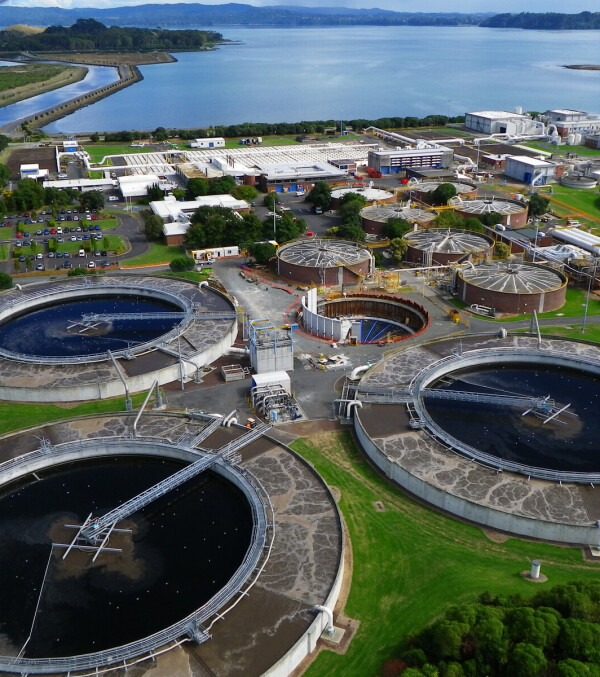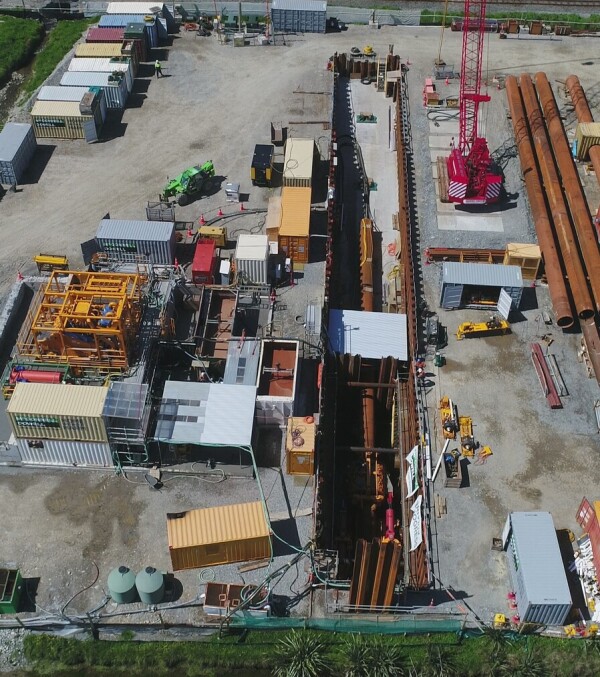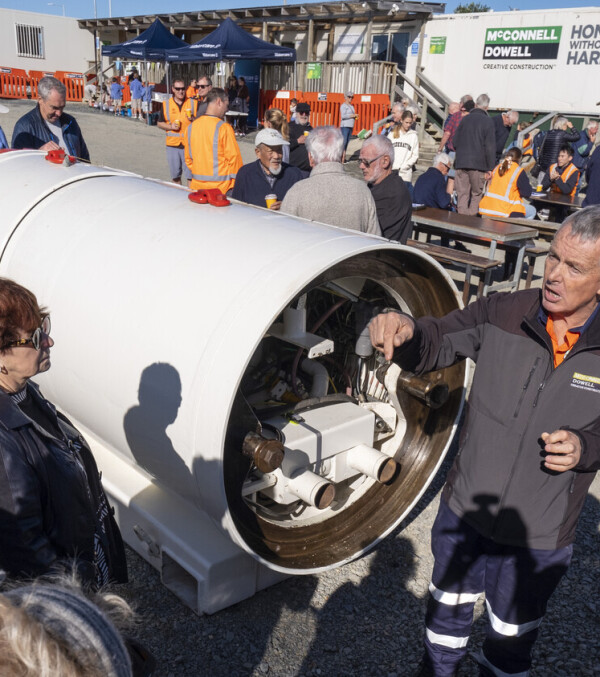|
Customer: Watercare Services Ltd Contract: Design and Construct Location: Mahurangi East, Auckland |
Fast Facts
|
Proposing a trenchless solution to minimise disruption, Watercare Services awarded us the Snells Algies wastewater pipe and outfall construction project. It resulted in new world record - a 2021 metre long Direct Pipe® drive delivered using a micro tunnel boring machine.
The project was the first phase of a three-phased scheme to improve water quality in the Mahurangi Harbour and cater for population growth in the Warkworth and Mahurangi East communities north of Auckland.
Our scope involved:
- constructing 4.3 km of 630 mm diameter HDPE pressure/gravity main by open trench methods following the public road alignment.
- installing 2.02 km of 1.2 m diameter steel pipe under private farmland out to a marine recovery trench 550 m off the coast.
- laying a 230 m marine outfall pipeline with 80 m diffuser section on the seabed for disposal of high-quality treated effluent into the Hauraki Channel.
- installing 530 m of 710 mm diameter HDPE pipe from the WWTP to connect to an existing pipe using horizontal directional drilling (HDD) across the Te Whau Creek.
Our solution featured the use of the Direct Pipe® system - trenchless pipelining to minimise disruption to the farmland and local environment.
The Challenge
The reference design for the outfall section consisted of using open trench methods to install the pipe through undulating farmland. This would have impacted severely on the landowners and their ability to farm their land around deep open trench excavations and movement of heavy machinery impinging on land and stock. So we went trenchless!
The 32 mm thick 1220 mm OD steel pipe for the Direct Pipe® was procured from Shanghai in lengths of 11.8 m. Weighing one tonne per metre this posed significant lifting and handling challenges.
The geological conditions of the Pakiri sedimentary rock was expected to be similar to the East Coast Bays Formation sandstone and siltstones encountered on the Army Bay Ocean Outfall project. However, this was not the case requiring reassessment of the micro tunnel boring machine (MTBM) operations.
Five weeks into the tunnelling drive New Zealand went into COVID-19 lockdown. The Government considered the Direct Pipe® portion of this project ‘essential’ supporting the need to keep the MTBM moving which necessitated the development of new procedures to comply with the COVID-19 regulations.
The Solution
Through discussions with Watercare, we proposed a single drive, trenchless alternative to install the outfall pipeline through the farmland. This revised design focused on minimising disruption to the farmland and local environment while meeting Watercare’s three key criteria;
- providing an efficient design with respect to whole of life cost;
- minimising risks to health and safety through application of Safety in Design principles, combined with construction methodologies with risk mitigation at their core; and
- minimising disruption to Watercare’s operations and landowners.
To overcome the logistics of moving and handling the heavy pipes on site, a number of pipe lifting and aligning frames were designed in house by our temporary works department and fabricated locally.
We implemented changes to the slurry management systems and maintenance regime of the MTBM to manage the variances between the geological formations encountered on the tunnelling drive.
The COVID-19 lockdown provided the team with opportunity to implement, ahead of the rest of the country, Level 4 COVID-19 Health and Safety practices and procedures, which were rolled out to the rest of the projects when the country shifted back to Level 3 and projects remobilised.
Key to Success
Early consultation was undertaken with the affected farm owners to establish trusted, collaborative relationships. We also engaged with the local school adjacent to our site compound to get buy in from the school community. This consisted of a presentation, a site visit and running a MTBM naming competition, the result of which was the designation Piper.
The original team and the same Direct Pipe® equipment from the Army Bay Ocean Outfall project were utilised for this project. Lessons learnt from the Army Bay project were also incorporated into the planning and operation of the Snells project to improve safety and operational efficiency.
The project’s location in a close-knit community required extensive interface with a broad range of stakeholders, including landowners, residents, businesses, road users, mana whenua and Auckland Council. With a number of traffic closures and reconfigurations required, close engagement with Auckland Transport was essential.
A new world record for the longest Direct Pipe® drive by a MTBM of 2021 m was successfully achieved, 92 m further than the previous world record set in New Zealand by McConnell Dowell in 2018 on the Watercare Army Bay Outfall project.
The first video below shows the challenging route of the project and the solutions developed by the team to overcome them. The second video shows a timelapse of the record breaking Direct Pipe®.

